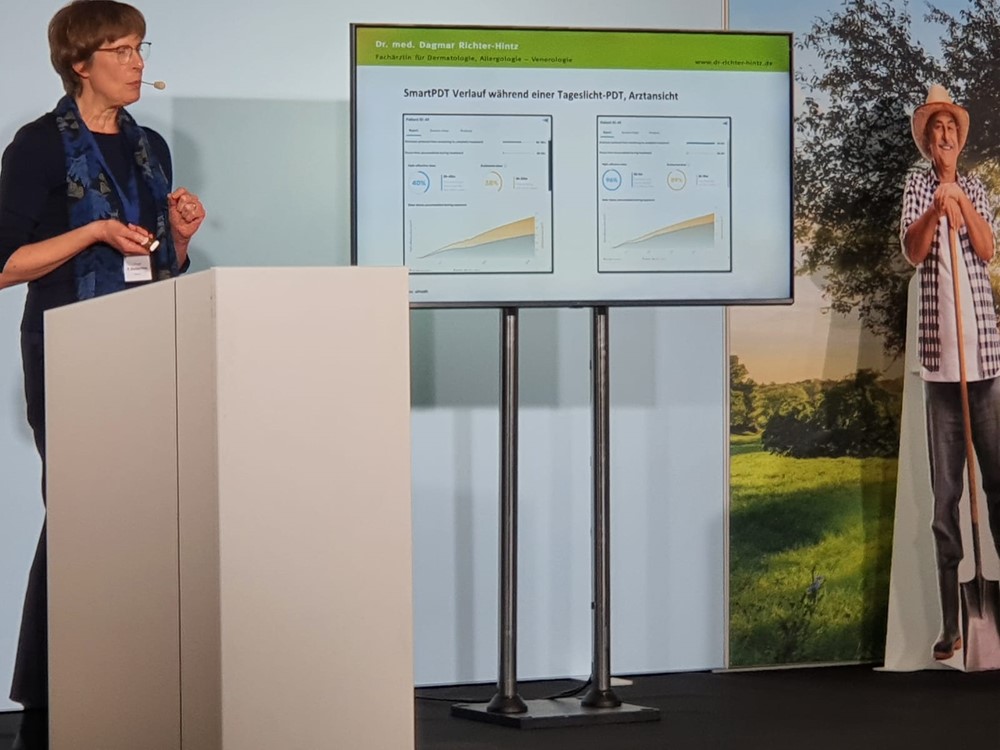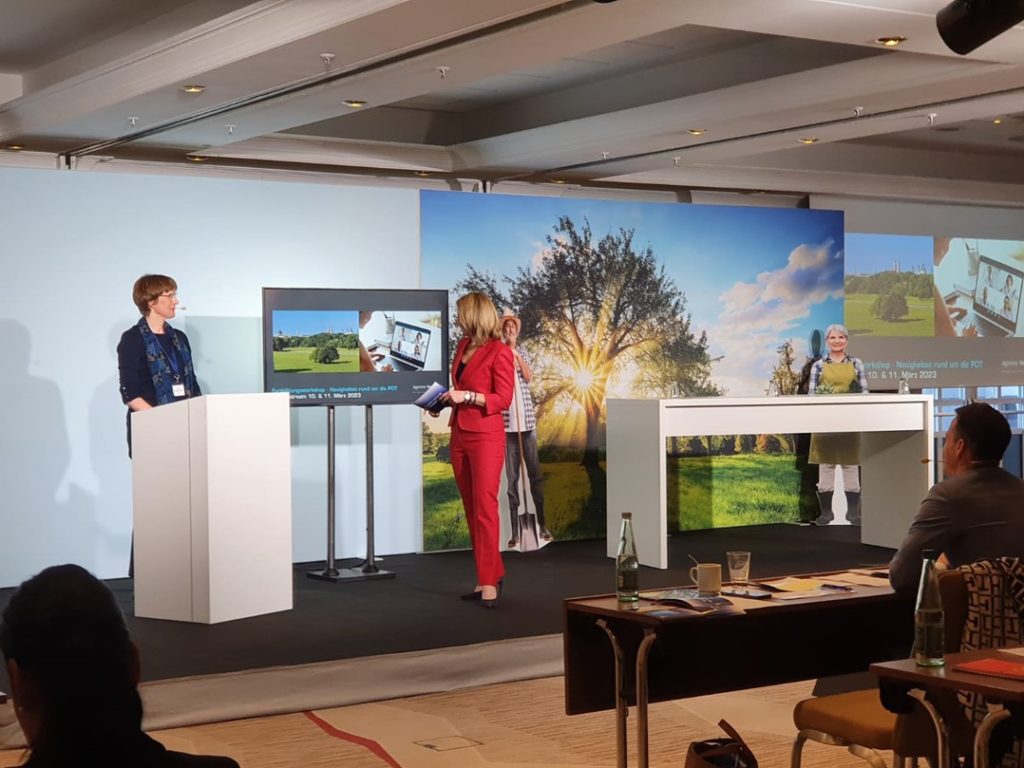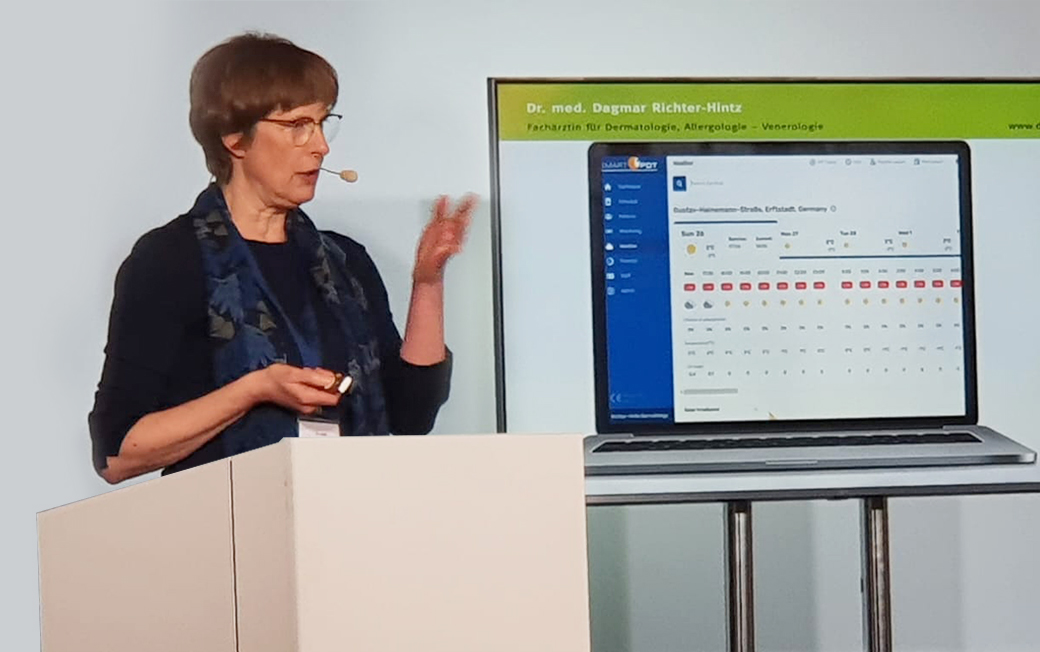There are clear advantages of natural daylight PDT (NDL-PDT) in the treatment of AK:
- it uses sunlight as a light source for the phototherapy, therefore less indoor clinic space and material investment costs are required with regards to artificial lights,
- it can be executed in a garden, park, or any outdoor environment, even far from a clinic or home.
On the other hand, although the protocol is well defined NDL-PDT is not a standardised process and dermatologists can´t control the effective solar radiation dose administration and the therapy adherence.
According to Dr. Richter-Hintz, SmartPDT® is an excellent solution for these issues and provides all the advantages of NDL-PDT, by means of this digital medical device, through a web portal and a patient / caregiver App, physicians can:
- Support the session steps for a standardized implementation of the protocol:
-
- Create and register a medical patient history profile,
- Schedule and rescheduling the therapy session, to make an appointment according to the weather forecast.
- Determine the correct sun protection to obtain the proper daylight therapy doses and prevent sunburn risk.
- Control the therapy adherence of the patient in terms of sun exposure
- Follow the possible adverse effects and therapy efficacy evolution with photo documentation
- Acquire feedbacks from the patient
- Issue a personalised patient care therapy certification report with details about the therapy administered, diagnostics, personalised care recommendations and next therapy steps.
- Save clinical personnel time allowing a multi-patient simultaneous DL-PDT administration, including remote cases, enabling the highest quality of life for the patient and for the clinical staff.


There are some unmet needs concerning phototherapy as a procedure and during her presentation, Dr. Richter-Hintz announced that siHealth is working on a new version of SmartPDT® that will be extended to any PDT methodology and could be administered in a patient-centered approach, managing all the phases of the NDL-PDT and ADL-PDT / C-PDT by artificial light sources. This will allow clinicians to combine different modes of PDT and continue to explore the PDT treatment for other skin diseases.

